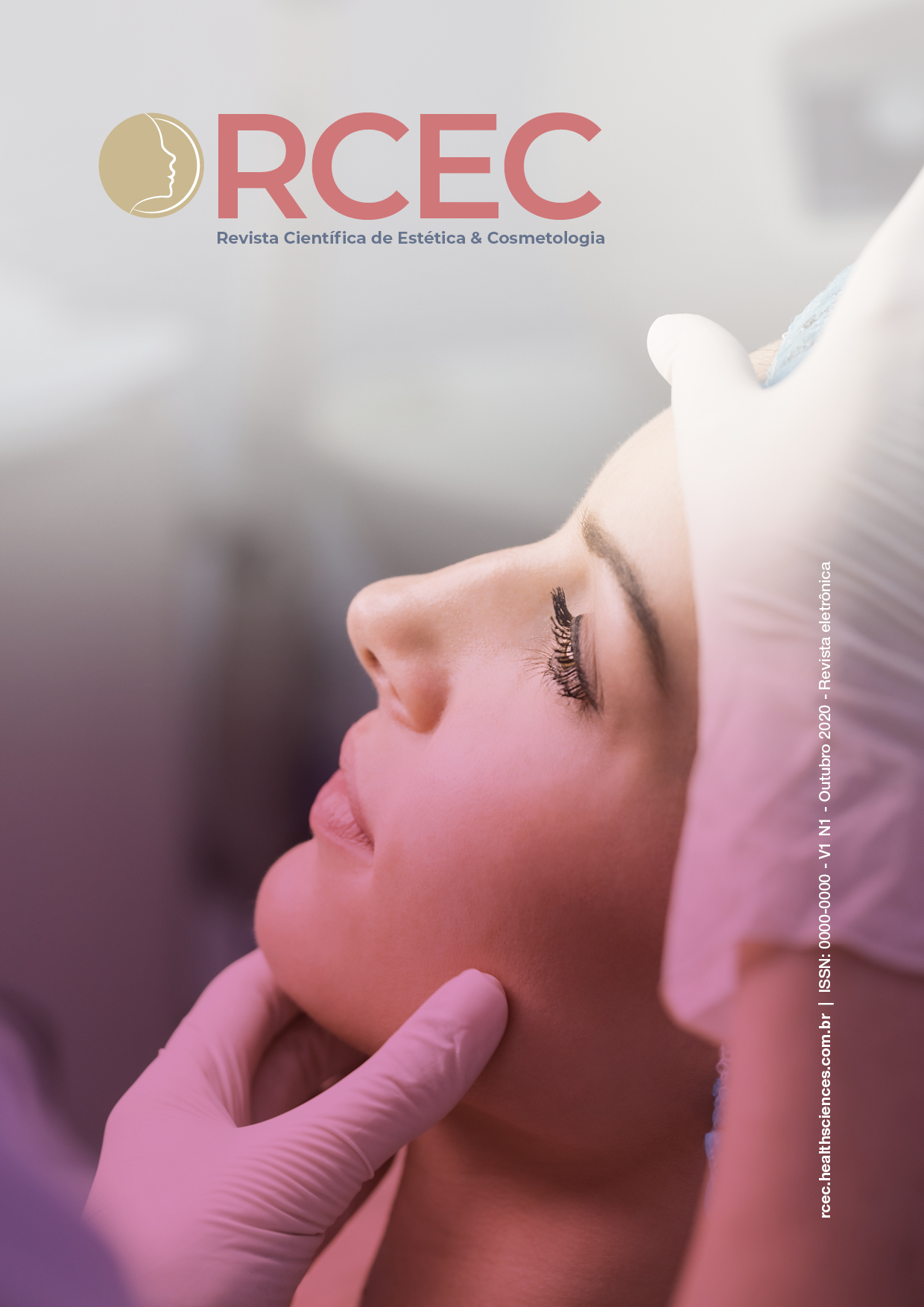Comparative study of the manual lymphatic drainage technique performed in the skeleton and direct hemibody through Power Lab
Main Article Content
Abstract
The Manual Lymph Drainage (MLD) is a technique that related to the lymphatic system, promoting circulatory stimulation quickly and comprehensively. Aiming to accelerate cells and metabolic waste by eliminating toxins, provide pain relief and edema. The objective of this study was to analyze if there is increased blood and lymphatic flow through the technique applied starting from the right hemisphere or from the left hemisphere, being monitored by Power Lab equipment, measuring the results and possible changes in vital signs. This is a clinical, randomized, primary study held in one place. Were selected 30 voluntary females from 20 to 35 years old, nonsmokers, sedentary and without complaints of edema or pain in the lower limbs (LL). The practical part was held inside the campus of Universidade Anhembi Morumbi (UAM) campus, at a 2nd floor’s lab. A single MLD with 30 minutes of duration was applied on the lower limbs, and the data were analyzed by Power Lab to measure vital signs. After signing the term of Informed Consent (IC) and an evaluation form. The results obtained demonstrated little differences related to decrease in cardiac output and blood pressure, but not enough to considerate significant at the final results, leaving the choice of which and how the procedure will be applied for the professional.
Article Details

This work is licensed under a Creative Commons Attribution 4.0 International License.
Copyright Statement - Policy Proposal for Open Access Journals
Authors who publish in the Scientific Journal of Aesthetics & Cosmetology agree to the following terms: 1 - Authors retain the copyright and grant the journal the right to first publication, with the work simultaneously licensed under the Creative Commons Attribution License allowing the sharing of the work with acknowledgment of the authorship of the work and initial publication in this magazine. 2 - Authors are authorized to assume additional contracts separately, for non-exclusive distribution of the version of the work published in this journal (eg, publishing in institutional repository or as a book chapter), with acknowledgment of authorship and initial publication in this journal. 3 - Authors are allowed and encouraged to publish and distribute their work online (eg in institutional repositories or on their personal page) at any point before or during the editorial process, as this can generate productive changes, as well as increase the impact and citation of published work.
This is an open access article under the CC-BY license
References
ALVES, V.L. In: PEREIRA, Maria de Fatima L. (Org.). Guia Para Ensino e Aprendizado de Estética - Recursos Técnicos I. São Paulo: Editora Difusão, 2ª. Edição, p. 196-198. (Série Curso de Estética), 2019.
LEDUC, A.; LEDUC, O. Drenagem linfática – teórica e pratica. 3. Ed. São Paulo: Manole, 2007.
LEDUC, O; et al. Impact of Manual Lymphatic Drainage on hemodynamic parameters in patients with heart failure and lower limb edema. Journal Lymphology. Brussels, v.44, n.1, 2011.
OZOLINS, B. C.; MENDES, A. F.; PINTO, L. P.; ASSIS, I. B. Drenagem Linfática Clássica: revisão de literatura. Revista Saúde em Foco, n.10, p.319-323, 2018.
TACANI, P.M., Efeito da massagem clássica estética em adiposidades localizadas: estudo piloto, 2010
CASSAR, Mario-Paul. Manual de Massagem Terapêutica. 1. ed. Barueri: Manole, 2001
Munn LL. Mechanobiology of lymphatic contractions. Semin Cell Dev Biol 2015;1-8.
BACELAR, R. O.; PEREIRA, V. H. Revisão de literatura da fisiopatologia da popularmente conhecida celulite: uma reflexão sobre o método Godoy e Godoy como possibilidade de tratamento. Rio de Janeiro, 2017.
MARQUES, T. M. L. S.; SILVA, A. G. Anatomia e fisiologia do sistema linfático: processo de formação de edema e técnica de drenagem linfática. Scire Salutis, v.10, n.1, p.1-9, 2020. DOI: http://doi.org/10.6008/CBPC2236-9600.2020.001.0001
ELWING, Ari, SANCHES, Orlando C. Drenagem linfática manual – teoria e prática. São Paulo: Senac, 2010.
SUTO, C. S. S. et al. Saúde do Homem: Efeitos dos exercícios físicos sobre o controle da pressão arterial, 2014.
MYERS J. Exercise and cardiovascular health. Circulation 2003;107: e2-e5.
HERPERTZ, U. Edema e drenagem linfática: diagnóstico e terapia do edema. 2. Ed. p 3-30, São Paulo: Roca, 2006.
. OPORTUS LSC, RODRIGUES LP, GODOY JMP, MENDONÇA SHF. Avaliação da drenagem linfática manual em cesarianas no alojamento conjunto. São Paulo: Revista Recien.; 9(26):68-7, 2019.
CAMARGO, E.A.M, MARCORIN, D. M., DA SILVA, B.D.D. HELLENO L.G., GOMES-MARCONDES, M.C.C., GRASSI-KASSISSE, D.M., PIRES-DE-CAMPOS, M.S.M. Composição urinária de homens e mulheres após drenagem linfática manual Fisioterapia Brasil - Ano 2015 - Volume 16 – Número 2
GUIRRO, E.; GUIRRO, R. Fisioterapia Dermato Funcional. 3. Ed. São Paulo: Manole, 2004.


